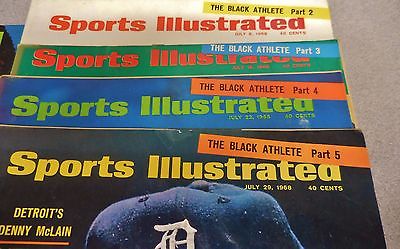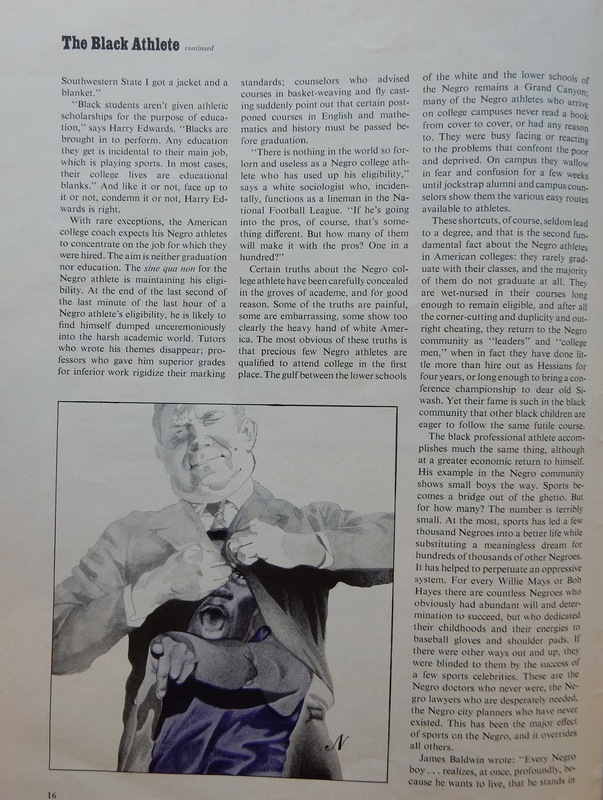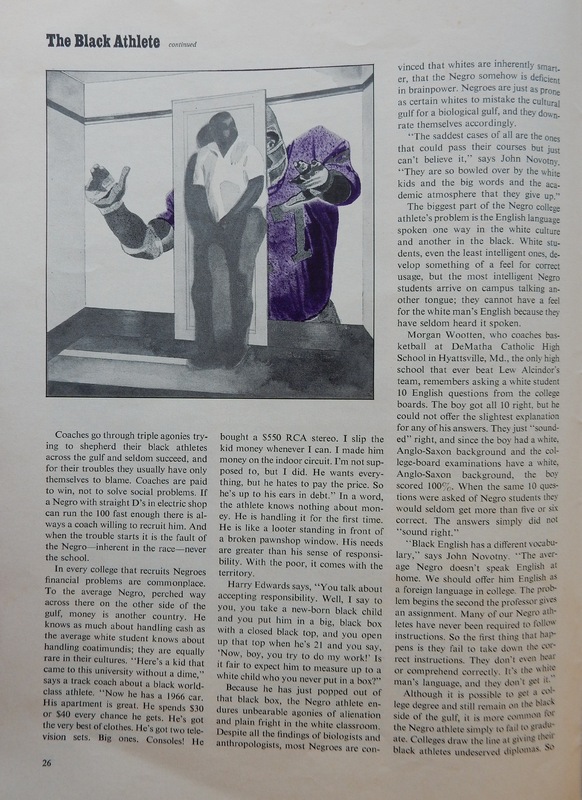Encoded Messaging in "The Black Athlete" Artwork
Page 16 of "The Black Athlete" features this artwork in the bottom left hand corner. The image seems to display an older, well groomed white man--perhaps a coach or athletic director--trying to contain a shouting black athlete in a basketball jersey within his sports coat. Or perhaps the image is of the black athlete bursting out of the white coach's tidy, proper sports coat white yelling. Either reading is telling of the inherent notion of white-black relations encoded in Olsen's piece. Should the athlete be bursting out of the sports coat, it might represent the boiling over of anger and resentment from black athletes towards the white institutions who failed them. If the white coach is buttoning the athlete back into his sports coat, it might be read as the white institution engulfing black youth for their athletic talent. The sense of the piece is that the white coach is in power here, struggling to manage the young, black basketball player. This management notion is woven throughout Olsen's piece. He mildly invokes a 'white man's burden' ideology by calling on white athletic administrators to take responsibility for their black players, rather than emphasizing the activism of the athletes themselves, and the inroads they might be making into changing their institutions. This illustration is part of the visual and discursive direction of the piece towards white readers. It appeals to the 'white' sense of justice. Olsen is correct to scold white athletic directors and coaches for their shortcomings, but he broadly paints the issue as one created by white people and solvable only by white people. Thus, Olsen underplays the agency of the same black athletes he endeavors to advocate for.
The artwork on page 26 depicts the myth and the reality of the black athlete experience. In the back of the image looms the powerful black football player, directing his teammates with authority. He is a shot-caller, a person who commands respect on the field and is esteemed in the sport. In the foreground, a faceless, featurless black figure leans forlornly against a door. This figure is strikingly different than the football star; he is isolated and disempowered. This image is a visual representation of Olsen's "great deception," signaling to the white audience that the way they see the black athlete (on the football field, perhaps in televised games, at press conferences) is not the real truth of his experience. He is largely alienated and lonely in his university. The artwork is powerful to white readers, and it appeals to the very tension that they are meant to feel as the story develops. The piece is intentionally emotional for white readers, and it supplants the concrete stories of Elvin Hayes, Bill Russel, and other athletes who Olsen interviews with an abstract concept of collegiate black athletic life. The impulse to move from real black athletes toward conceptual notions is a classic pattern of white depiction of black culture.


